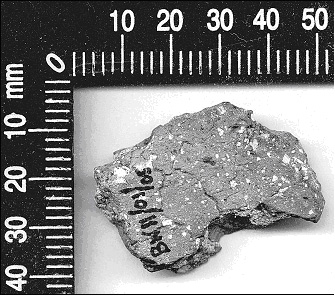
Backgarden Archaeology
By Mike & Kate Pratt
previous article | up | next article
... continued from page 1 ...
Test Pit 1

Test Pit: 1 metre square & up to 60 cm deep - finds identified by layer
We decided to open our first test pit (see diagram) on Sunday 29th June 2003 and we chose a spot where there used to be a hedge on the basis that it might be relatively undisturbed. Archaeologically it was an ideal first pit for training purposes. It had a post hole of recent origin with rotting wood and two large rusty bolts in it which proved interesting to excavate. Lots of pieces of pot emerged and it was readily apparent that old and new pieces were mixed up so the area had probably been deeply dug at some time, perhaps for the posthole.
With pieces of pot accumulating, we had to find the experts who could put a date to them. Luckily York had a venue where finds (of all kinds including pottery and metal) could be taken for identification and dating. This is part of the Portable Antiquities Scheme and it proved to be an invaluable resource. We went regularly, taking the finds as they appeared. Gradually a picture built up, just from Test Pit 1, of pottery types that indicated continuous human habitation on the site from the 11th Century to the present day.
Rock Bottom
At about 45cm we hit a closely packed chalk layer that we took to be the natural level of subsoil beyond which there would be no further signs of human habitation. But as one last bonus, right on the bottom of the pit, a piece of pottery emerged that stood out as being older than anything else we had found so far. Resembling light-coloured, hard-baked muesli, with a cracked surface and flecked with small pieces of chalk it was initially dated as Bronze Age circa 2000 BC. A more recent dating has advanced that slightly to the Late Bronze Age circa 1000 BC (ie. around 3000 years old).

The Late Bronze Age Pottery sherd
Page 2 of 4
(c) Copyright 2009 Contributors. All rights reserved. |